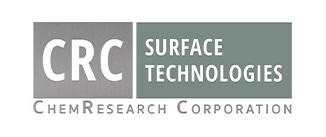
11 Sep How Non-Destructive Testing Ensures the Safety of Aerospace and Military Equipment
When it comes to aerospace and defense manufacturing, there’s no room for error. Every single component must meet strict safety and reliability standards. Non-destructive testing (NDT) is a crucial part of ensuring that mechanical parts perform flawlessly and reliably, even under extreme conditions.
At CRC Surface Technologies, we integrate NDT into our quality assurance process to identify potential flaws before they can become critical failures. Here’s more about the methods we use to guarantee the quality of every part we finish.
What Is Non-Destructive Testing?
In metal finishing, non-destructive testing refers to the inspection methods used to evaluate the integrity of metal components without causing any damage. It allows us to check for cracks, corrosion, porosity, and other hidden defects that might compromise the integrity of the finish. Here are some examples of the testing methods we use.
Liquid Penetrant Testing
Liquid penetrant testing is ideal for detecting surface-level defects such as cracks, seams, or porosity. We apply a special dye to the surface of the component that will seep into any imperfections. After removing the excess dye, a developer is applied to draw out the penetrant from the defects, making them clearly visible. This method is highly effective for non-porous materials and helps ensure no surface flaws are overlooked before finishing.
Magnetic Particle Testing
Magnetic particle testing is used primarily on ferromagnetic materials to locate surface level and slightly subsurface impurities. The component is magnetized, and fine magnetic particles are applied to its surface. Any cracks or other flaws disrupt the magnetic field, which causes the particles to gather along the defect and reveal its location. Magnetic particle inspection is particularly valuable for aerospace and military parts that must maintain structural integrity under stress.
Why NDT Matters in Aerospace & Military Applications
Aerospace and defense industries demand the highest levels of safety and reliability. Even the smallest defect in a component can lead to catastrophic consequences.
Non-destructive testing means you can count on:
- Structural Integrity—NDT confirms that each part can withstand high stress, extreme temperatures, and harsh environments.
- Compliance with Standards—Testing ensures that parts meet strict industry specifications, such as MIL-SPEC, NADCAP, and AS9100
- Cost Savings—Detecting flaws early prevents expensive rework, downtime, or replacements.
- Mission Safety—Ensures that equipment performs as intended, especially in life-critical situations.
How Metal Finishing and NDT Work Together
As a metal finishing provider, we don’t only apply protective coatings and treatments—we also ensure that the finished product is safe and reliable from start to finish. NDT plays a critical role in this process.
Non-destructive testing at CRC Surface Technologies includes:
- Pre-Finishing Inspections—We inspect parts before plating or coating to detect defects that could compromise adhesion or performance.
- Post-Finishing Quality Checks—After the finishing process, we verify that there are no stress cracks or other imperfections.
- Corrosion Prevention Validation—NDT helps us confirm that our coatings will provide long-term durability.
Non-Destructive Testing & Metal Finishing in Phoenix
When you need precision surface treatments, go with CRC Surface Technologies. Our NADCAP-approved non-destructive testing process ensures our metal finishing processes meet the highest level of quality and compliance with industry standards. From electroplating and chem-film to anodizing and passivation, we offer a variety of surface treatments to manufacturers nationwide.
Give us a call at 602-253-4175 to learn more about our services, or email rfq@chemresearchco.com to request a quote.
Images used under creative commons license – commercial use (9/11/2025). Photo by John McArthur on Unsplash

